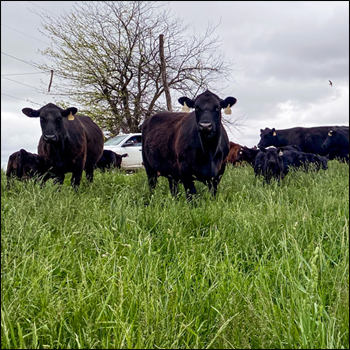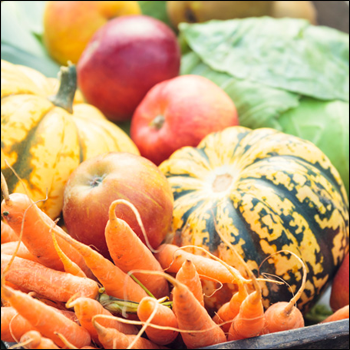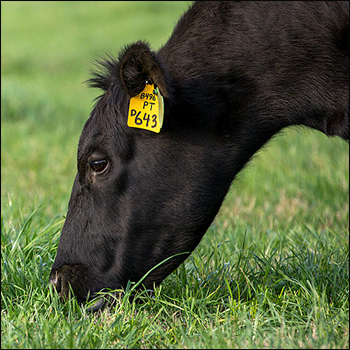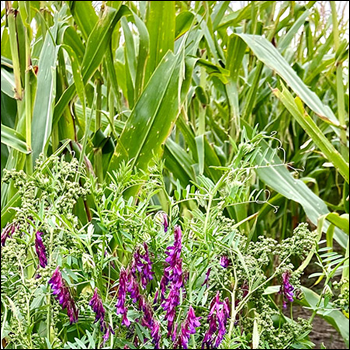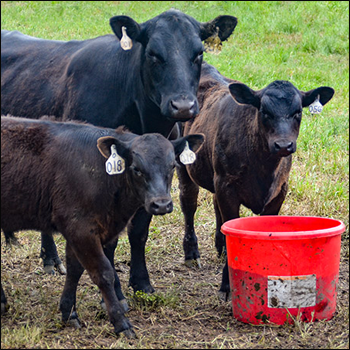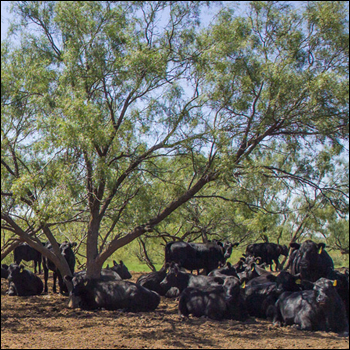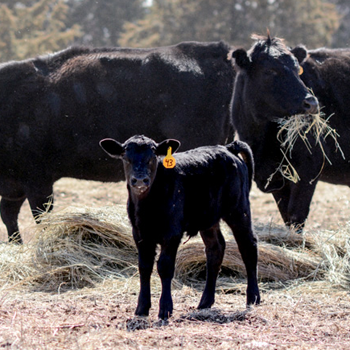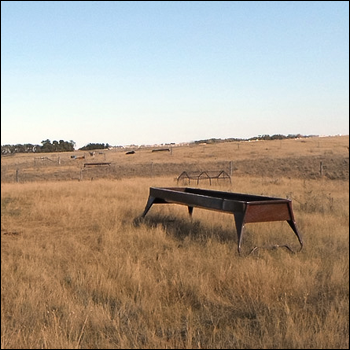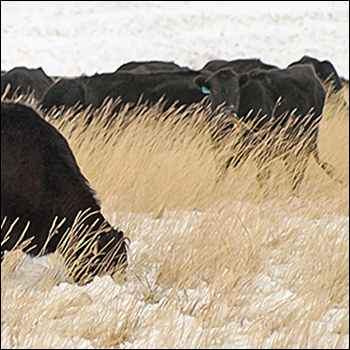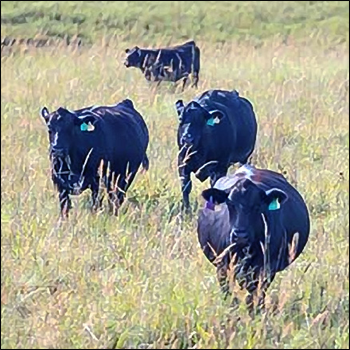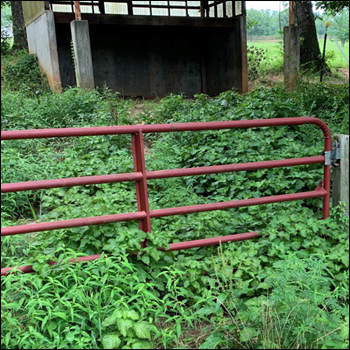News & Notes
Industry tidbits from around the country.
New veterinary debt solutions program
Farm Journal Foundation is partnering with the Zoetis Foundation to launch a new program for relieving student debt in the veterinary industry, with the long-term goal of addressing shortages of veterinarians to work with farmers in rural areas.
The new Veterinary Debt Solutions Program will convene leaders from across the livestock, academic, nonprofit, and veterinary sectors to address barriers that veterinarians face in building long-term careers in rural areas. High levels of student debt, combined with comparatively lower rural salaries and demanding workloads, discourage many young and diverse professionals from specializing in large-animal veterinary science and entering the workforce, particularly in underserved rural areas.
“The lack of veterinarians in many rural areas to support the livestock industry poses risks to farming livelihoods and ultimately our food supply,” says Tricia Beal, CEO of Farm Journal Foundation. “We are grateful to the Zoetis Foundation for their vision and partnership to address this important issue.”
Read more at https://bit.ly/EXTRANN1.
Industry reactions to packing policies
The National Cattlemen’s Beef Association (NCBA) supports the Amplifying Processing of Livestock in the United States (A-PLUS) Act, introduced recently in the U.S. House of Representatives by Rep. Vicky Hartzler (R-MO) and Rep. Jimmy Panetta (D-CA). If enacted, the bill would clarify regulations under the Packers and Stockyards Act to allow livestock market owners to maintain an ownership interest in small meatpacking entities, and would secure another tool in the toolbox to boost processing capacity and alleviate key challenges in cattle marketing.
“The need for new packing facilities has become a critical issue for the cattle industry. Huge amounts of capital are required to get new facilities up and running. Understanding the need for these new facilities, producers themselves have invested in these efforts, but outdated regulations still prevent livestock markets from having ownership in packing facilities. The A-PLUS Act paves the way for the marketing segment of the cattle industry to be included as investors in these facilities, helping reduce dependence on major packers and improving the competitiveness of the live-cattle market,” says Clint Berry, chairman of NCBA’s Livestock Marketing Council.
The A-PLUS Act amends the Packers and Stockyards Act to allow livestock markets to own, invest in, or manage small to medium-sized processing facilities with a slaughter capacity of less than 2,000 head per day or 700,000 head per year.
“The meatpacking sector continues to be the bottleneck in the cattle and beef supply chain,” said NCBA Senior Director of Government Affairs Tanner Beymer. “Opening more small and medium-sized processing facilities increases opportunities for producers to market their cattle and helps balance leverage in pricing negotiations.”
NFU supports revised cattle market legislation
On March 28, the Cattle Price Discovery and Transparency Act of 2022 was publicly released, led by Sens. Jon Tester (D-MT), Chuck Grassley (R-IA), Deb Fischer (R-NE), and Ron Wyden (D-OR). The bill is a revised version of similar legislation introduced last year.
National Farmers Union (NFU) supports the bill and urges Congress to act quickly to pass this critically important legislation.
“Rampant consolidation in the cattle industry has made pricing in the cattle market increasingly opaque," says NFU President Rob Larew. "Fair and competitive markets rely on price discovery and transparency. For farmers and ranchers to bargain effectively with packers, they need access to reliable, accurate pricing information. This bill would shed light on the market and bring about greater fairness."
The act makes important reforms, including:
- Establishing mandatory minimum purchase volumes for packers through “approved pricing mechanisms” based on five to seven geographic regions, to be determined by the USDA.
- Bringing more transparency by requiring reporting of cattle weights and slaughter deliveries two weeks in advance.
- Clarifying and implementing a cattle contract library.
- Increasing penalties for violations by packers.
Further details about the bill from the cosponsors are available here. The full text of the bill is available here.
Ranch group urges rejection of compromised cattle market reforms
The Ranchers-Cattlemen Action Legal Fund, United Stockgrowers of America (R-CALF USA) urged rejection of the entire section of the bill that purports to reform the cattle market in Cattle Market Price Discovery and Transparency Act of 2022 (S.4030).
Calling the cattle market section an ineffectual reform to the abject market failure plaguing the U.S. fed-cattle market since 2015, and further stating that the reforms decisively favor the status quo, the group states Congress is giving the USDA carte blanche as to whether the packers will be required to change their current procurement practices and is giving the USDA two years to make its decision.
The group cited two new economic studies that purport the alternative marketing arrangements (AMAs) that predominate the market, combined with packer concentration, are causing cattle prices to be low and beef prices to be high.
In its recommendation to Congress, the group suggests the cattle market reforms be substituted with the spot market protection bill (S.949), which the group stated was a better starting point for achieving more immediate and meaningful reforms.
Read more at https://bit.ly/EXTRANN2.
U.S. farmers and ranchers lead on sustainability
U.S. farmers’ and ranchers’ world-leading sustainability efforts, including the U.S. beef community’s commitment to reach carbon neutrality by 2040, the U.S. pork community’s goal to reduce greenhouse gas (GHG) emissions 40% by 2030, and the U.S. dairy community’s commitment to achieve GHG neutrality by 2050, are among the significant contributions highlighted in the most recent edition of the Animal Agriculture Alliance’s Sustainability Impact Report.
Released in advance of Earth Day, the report provides the latest data on the nutritional benefits of meat, milk, poultry and eggs, and details U.S. animal agriculture’s achievements in modern environmental stewardship, animal care, judicious antibiotic use and food safety. These achievements contribute to reaching the United Nations Sustainable Development Goals.
U.S. farmers’ and ranchers’ world-leading modern practices allow them to produce more food today using fewer resources than at any time in the past, serving as a global benchmark for efficiency.
Report highlights include:
- Nutrient-dense animal proteins are low-calorie and critical sources of essential nutrients. One 3-ounce serving of lean beef takes up less than 10% of a healthy daily calorie allowance while delivering half the daily protein recommended for adults.
- The U.S. dairy community supplies the protein requirements of more than half the U.S. population and the calcium requirements of 77% of Americans.
- The U.S. pork community reduced land use by 76% and water use by 25% from 1960 to 2015, producing more pork today with a smaller carbon footprint per pound.
Furthering these contributions and achievements, the Animal Agriculture Alliance and organizations across animal agriculture also partner through the Protein PACT, the largest-ever effort to strengthen animal protein’s contributions to healthy people, healthy animals, healthy communities, and a healthy environment.
For more information, including resources and to read the full report, visit https://bit.ly/EXTRANN3.
USDA study aims to facilitate traceability during foodborne outbreak investigations
Scientists with the USDA’s Agricultural Research Service (ARS) aim to enhance the capacity of regulatory agencies to trace E. coli O157:H7 back to its source during a foodborne outbreak investigation by studying how the DNA of a specific population of this bacterium gradually evolves within its natural environment.
The findings from scientists at the U.S. Meat Animal Research Center (USMARC) at Clay Center, Neb., equip outbreak investigators with information on specific elements of the bacterium’s DNA that can narrow where to look for the outbreak source.
As these bacteria are found naturally in the intestines of cattle, the team of scientists analyzed samples collected from the Center’s closed cattle feedlot from 1997 to 2019 and studied the genomes (the organism’s genetic composition) of various strains, or subtypes, of E. coli O157:H7 found in these samples.
“The samples used in this research gave us a unique opportunity to study the genomes of a specific population of E. coli O157:H7 in their natural environment,” explains Maggie Weinroth, a computational biologist with the Poultry Microbiological Safety and Processing Research Unit in Athens, Ga., (working at USMARC at the time of this research).
“The USMARC feedlot has been closed to any introduction of cattle, except those raised in the Center. This means that the E. coli strains have not been influenced by cattle from other locations for 23 years, allowing us to focus on changes in the bacteria genomes as they evolved over those years,” says Weinroth.
Learn more at https://bit.ly/EXTRANN4.
NCBA and PLC welcome expansion of ELAP
The NCBA and the Public Lands Council (PLC) welcome the USDA’s decision to expand the Emergency Assistance for Livestock, Honeybees and Farm-Raised Fish Program (ELAP) to cover a portion of the costs incurred from the transportation of livestock to feed sources.
“We are appreciative that the USDA Farm Service Agency (FSA) listened to requests from producers who are suffering through the continued impact of multiple years of unprecedented drought and skyrocketing input costs. We are also grateful for the efforts of Senator Thune’s office as we worked together to provide further flexibility within the program,” says NCBA Executive Director of Government Affairs Allison Rivera. “As cattle producers continue to navigate challenges associated with drought, it is critical to ensure they have the resources necessary for their businesses to remain viable, while giving the highest-quality care to their livestock.”
“Western ranchers experience daily the devastation caused by one of the most extreme droughts we have seen in recent years. From increased risk of catastrophic wildfire to lack of sufficient grazing lands, producers are facing difficult decisions when it comes to herd management,” says Executive Director of PLC and NCBA Natural Resources Kaitlynn Glover. “This announcement comes at a critical time, and we are appreciative of both FSA and Senator Thune for prioritizing the needs of cattle producers."
Across areas of the western United States where grazing is a main source of feed for cattle production, unprecedented drought has made rangelands insufficient for proper grazing. ELAP originally covered the cost of moving feed to livestock, but for cattle producers, hauling livestock to other feed sources that are not easily moved is often a more efficient and economical method.
USDA’s announcement follows a letter NCBA sent to FSA requesting the inclusion of coverage for moving livestock to feed during extreme drought conditions, in addition to the provision already included for moving feed to livestock.
Angus women connect, engage and empower
More than 30 women gathered at the Elms Hotel & Spa in Excelsior Springs, Mo., to network, learn and celebrate their passion for Angus cattle at the American Angus Auxiliary’s biennial Angus Women Connected Conference.
“The main goal of Angus Women Connected Conference is to bring together a group of people that share a common bond of Angus cattle, from across the United States,” says Anne Lampe, chairman and conference coordinator of Women Connected. “It allows them to form a network and experience educational workshops while feeling engaged and empowered.”
Attendees kicked off their stay at the Elms Hotel with an opening reception, where keynote speaker Courtenay DeHoff spoke about her social movement, Fancy Lady Cowgirl™.
The following day, several American Angus Association and industry experts presented to participants. They heard from the Angus Foundation, Events and Education, Angus Media, and Certified Angus Beef. To wrap up the educational sessions, Kirsten Angell, a registered dietitian and diabetes care and education specialist, helped attendees recognize the importance of nutrition, physical activity and mental health.
The conference concluded the following day with a tour of the Association headquarters in Saint Joseph, Mo. Attendees met with representatives of Angus Genetics Inc., the member services department and Angus Media to learn the inner workings of the Association.
Through the generous support of the Angus Foundation, the conference, lodging and meals are at no cost to participants.
To learn more about Angus Women Connected and the American Angus Auxiliary, visit www.angusauxiliary.com.

Angus Proud
In this Angus Proud series, Editorial Intern Jessica Wesson provides insights into how producers across the country use Angus genetics in their respective environments.
 Angus Proud: Scott Sproul
Angus Proud: Scott Sproul
Oklahoma operation learned wisdom of moving calving season to better suit their marketing needs.
 Angus Proud: Bubba Crosby
Angus Proud: Bubba Crosby
Fall-calving Georgia herd uses quality and co-ops to market calves.
 Angus Proud: Jim Moore
Angus Proud: Jim Moore
Arkansas operation retains ownership through feeding and values carcass data.
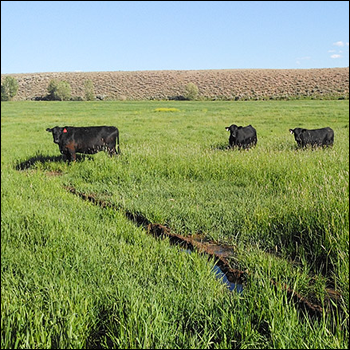 Angus Proud: Stephen Shiner
Angus Proud: Stephen Shiner
Idaho operation rotates pastures in summer and raises crops for winter.
 Angus Proud: Les Shaw
Angus Proud: Les Shaw
South Dakota operation manages winter with preparation and bull selection.
 Angus Proud: Jeremy Stevens
Angus Proud: Jeremy Stevens
Nebraska operation is self-sufficient for feedstuffs despite sandy soil.
 Angus Proud: Dave Rutan
Angus Proud: Dave Rutan
Angus breeder gets the most out of his bull investment by partnering with opposite calving-season operation.
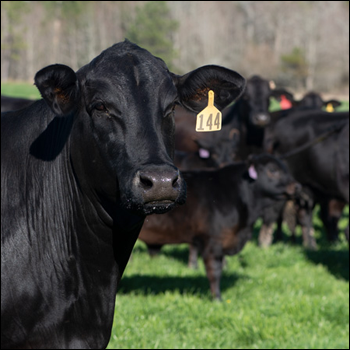 Angus Proud: Nickey Smith
Angus Proud: Nickey Smith
AngusLink helps Louisiana cattleman gain more for his calves.
